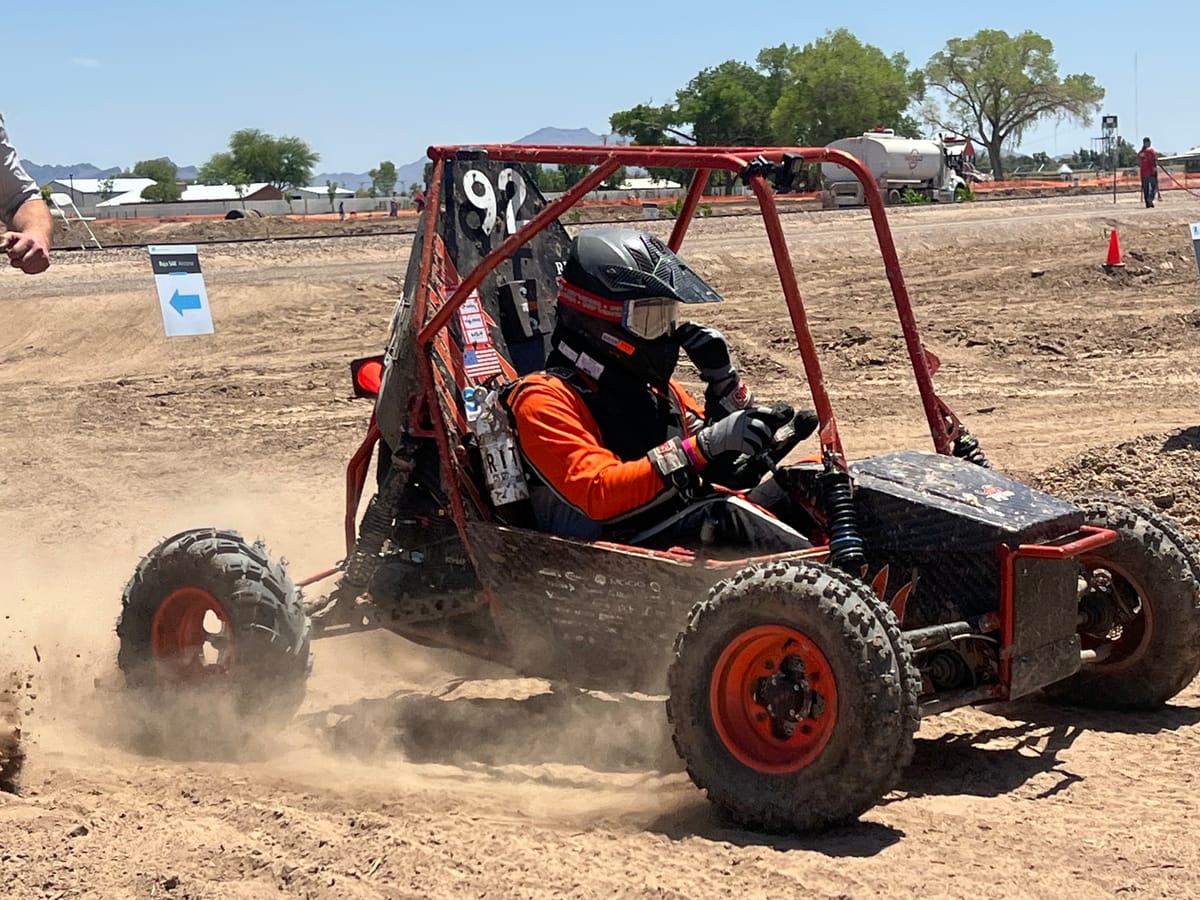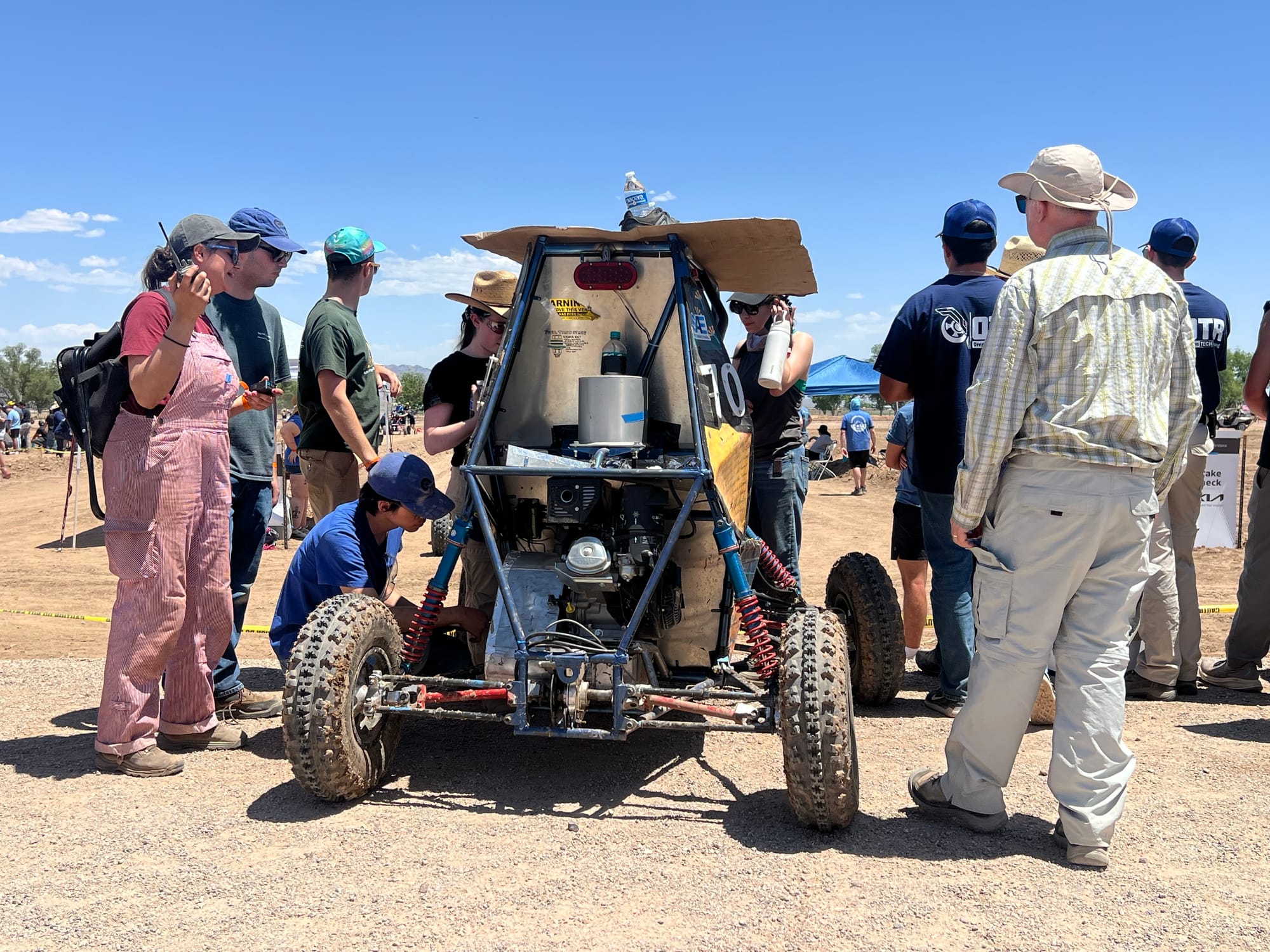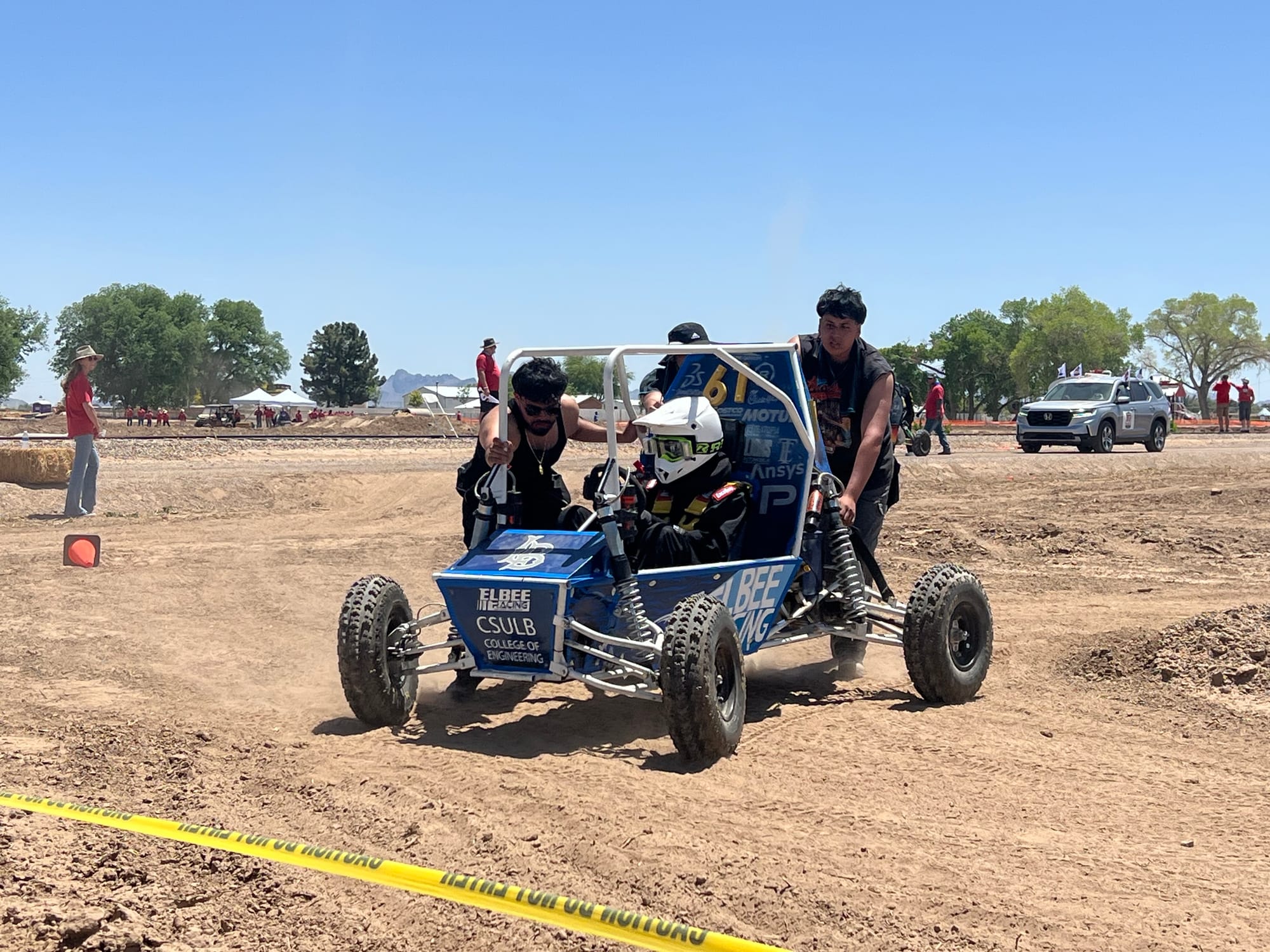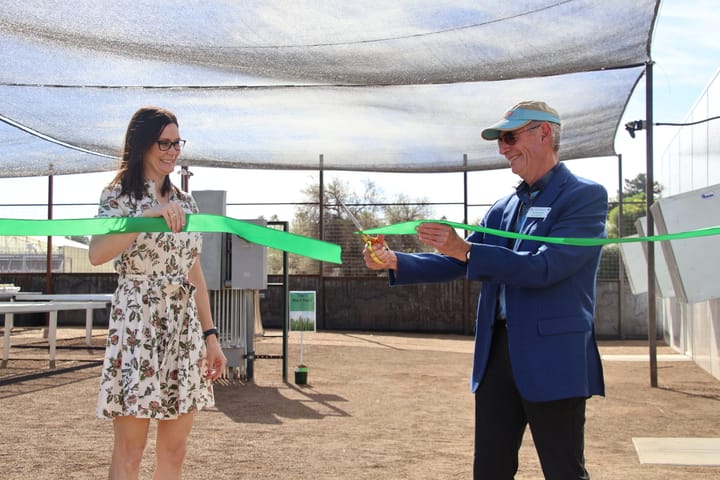Engines roar and futures ignite at Baja SAE competition in Marana
The Baja SAE competition in Marana brought together 68 university teams to showcase their engineering skills and off-road vehicle prototypes, offering students hands-on experience while fostering community and collaboration.

Amid clouds of dust and the roar of custom-built engines, college engineers from across North America descended on the Marana Pumpkin Patch fields earlier this month to prove their grit, creativity and mechanical prowess.
Sixty-eight university teams faced off in the Baja Society of Automotive Engineers engineering design competition, showcasing their single-seat, all-terrain vehicles.
For nearly 50 years, Baja SAE has challenged students to build vehicle prototypes that can withstand all kinds of conditions. The events are hosted in three different locations annually; two take place in the summer months, and one is in the fall.
Students have the opportunity to gain hands-on experience outside the classroom by learning how to navigate real-world engineering problems with their teams.
To qualify, each team submits a business proposal, following a prompt that changes every year. This year, students had to pitch their off-road vehicles to a fictional defense company.
The top teams moved on to the in-person competition.
Every team’s vehicle is powered by the same engine, so the event is less about speed and more about creating a reliable and durable product.
Organizer and principal mechanical engineer at Raytheon, Josh Spivey, has been volunteering for almost two years, helping to bring the event to the Southwest.

Spivey competed in the event from 2008 to 2011 as an engineering student at the University of Arizona.
“The program gave a lot to me as an individual, I owe my career to this,” he told Tucson Spotlight. “I just wanted to give back to something that gave a lot to me and it’s a lot of fun. Giving back to the kids is what fuels us.”
The student groups spent the first two days of the competition setting up their pits and undergoing technical inspections. Rows of flags representing each school lined the event grounds as students worked through the high-temperature, dry-heat days to prepare for the on-road tests.
Saturday and Sunday included on-road skill tests that pushed students’ vehicles to the limit. Breakdowns are inevitable, and students have to think fast and work even faster to make repairs on the fly and get back onto the course.
“You are never going to find students like this,” Spivey said. “These students aren’t just doing homework, they’re not just taking a test. They’re working with their peers and solving real engineering problems on the fly.”
During the weekend’s events, teams competed in engineering and skills challenges and were evaluated on acceleration, maneuverability, sled pull, suspension and traction skills. The main event was a four-hour endurance race where the vehicles traversed a rugged and challenging all-terrain course.
But despite the high stakes and competitive atmosphere, Baja SAE fosters a unique bond among participants.
“There is a sense of community that this program brings them,” Spivey said. “All of them are competing and want to win, but they also want to see each other succeed.”

Spivey said the event is a true collaborative effort, and that the town of Marana and the Post family, who own the Marana Pumpkin Patch, have been incredibly supportive.
“The whole Post family and Post Farms have been super great to work with,” he said. “They let us tear up two of their fields, and they fully supported everything that we were doing. The town of Marana and people from Pima County have been doing an awesome job helping me promote and get the word out.”
Beyond the competition itself, Spivey sees the event as a powerful tool to inspire the next generation of engineers.
“This is a great STEM event,” he said. “This is what I call the fun side of engineering. This is a great opportunity for kids to see what they could be doing and could be a part of.”
Placing in the top three this year were Cornell University, Canada’s Ecole de Technologies Superieure, and John Hopkins University.
Bringing the event to Marana wasn’t just a win for the students who participated, it was also a meaningful opportunity for the town.
“Hosting the Baja SAE competition was a fantastic opportunity to showcase Marana to future engineers and their families from across North America,” said Stefanie Boe, tourism and marketing manager for Discover Marana. “We welcomed hundreds of visitors who experienced firsthand what makes our community so special.”
Baja SAE will celebrate its 50th anniversary next year.
McKenna Manzo is a journalism major at the University of Arizona and Tucson Spotlight intern. Contact her at mckennamanzo@arizona.edu.
Tucson Spotlight is a community-based newsroom that provides paid opportunities for students and rising journalists in Southern Arizona. Please support our work with a paid subscription.



